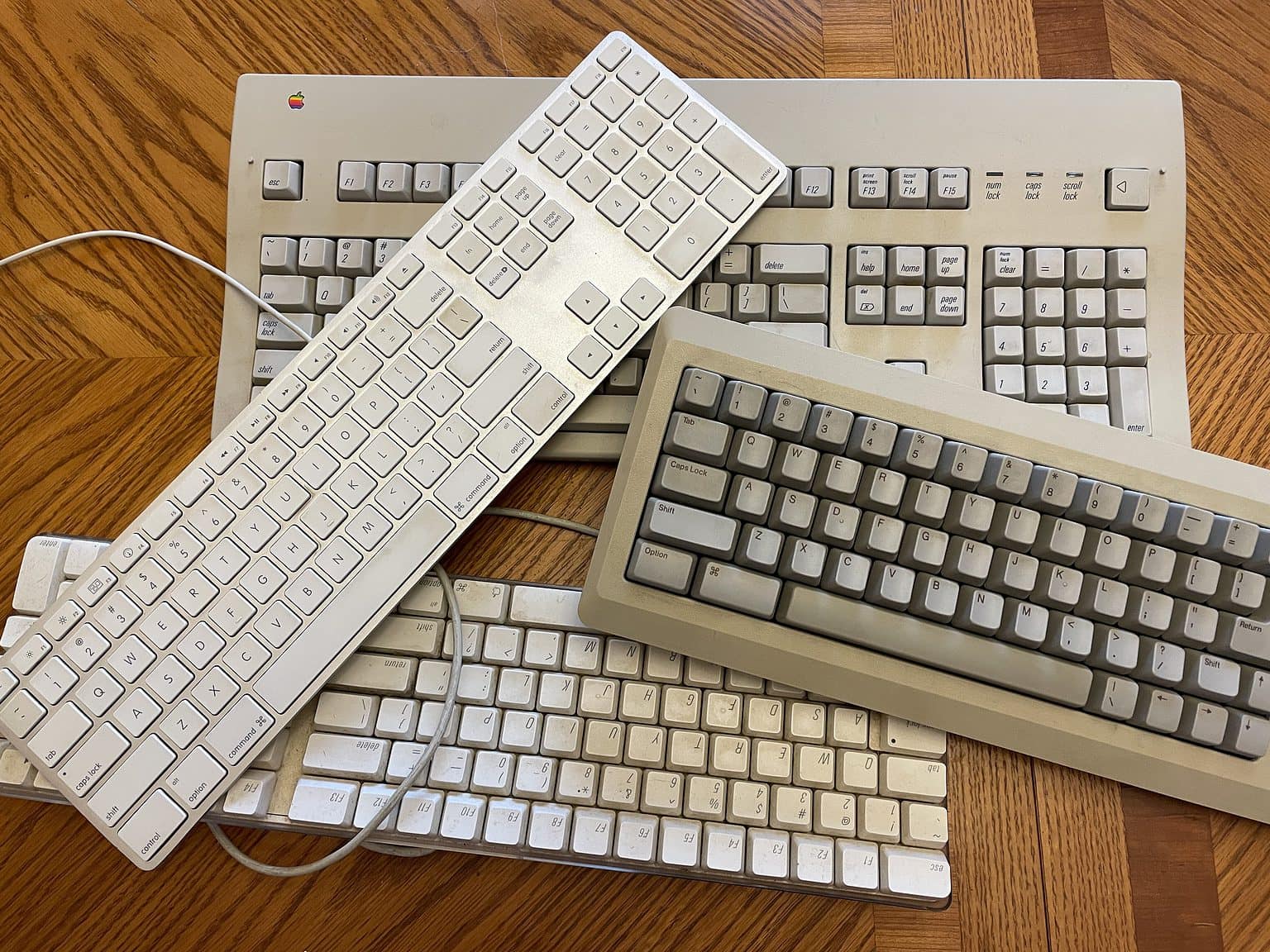In the 40-odd years that the Mac has been on the market, very few people have actually used all of Apple’s keyboards. I haven’t either, but I’ve come close. Here is my review of every Apple keyboard I’ve got my hands on — ranked from worst to best.
Apple keyboards, ranked!
This is, of course, a subjective and personal list from one highly opinionated writer. What I consider great you may find weird or objectionable. But some designs are unquestionable stinkers, and we’ll start there.
12. Butterfly Keyboard
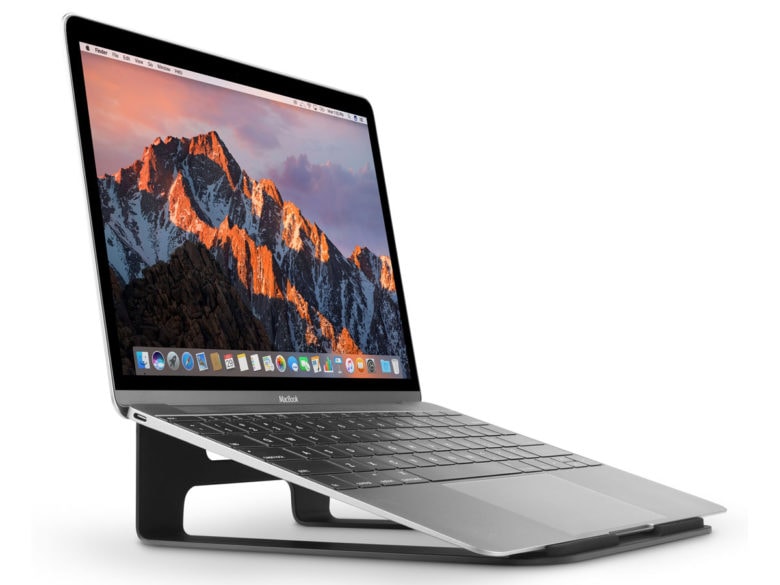
Photo: Twelve South
This keyboard is so bad, Apple turned every tech journalist and every MacBook buyer into an annoying shrieking keyboard snob by designing something so thoroughly terrible.
Where to start? The keys have virtually no travel whatsoever, so you don’t have the feedback that comes with, you know, typing a key. They made the keys significantly larger, so you can’t feel if you’re typing dead center or in the gutter between two keys. It’s barely any better than typing on glass.
It broke if but a single piece of dust, hair or dandruff approached its general direction. Apple denied there was a problem, then downplayed the problem. The company offered absolutely ridiculous home remedies in place of a proper solution. Then it rolled out revision after revision, earnestly believing it was fixed for realsies every time, before finally axing it, returning to the old design.
And it took years. Everyone hated this keyboard. It was so universally panned that it trickled far outside the tech blog space into Hollywood press interviews.
This keyboard definitionally takes last place for stretching the limits of what is even a usable keyboard.
11. Apple Keyboard
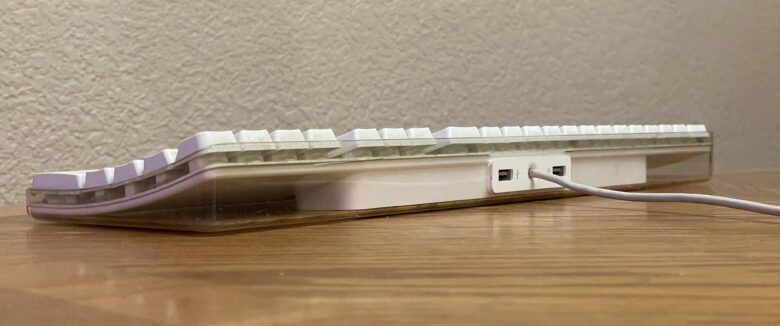
Photo: D. Griffin Jones/Cult of Mac
During Apple’s brief love affair with translucent plastics, the Apple Keyboard was brought into the 21st century with a stunning new design. The keys are practically floating in the air. It perfectly matches your floating display and floating cube computer. (At least it would have, if anyone bought it.)
That’s where the compliments end. This is one of the worst keyboards I’ve ever typed on. It’s so mushy it feels like the keycaps have been glued onto a dry kitchen sponge.
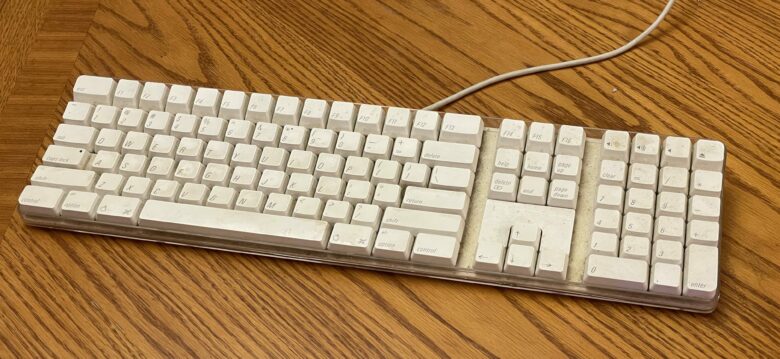
Photo: D. Griffin Jones/Cult of Mac
Rest your fingers on your keyboard, close your eyes and press a few keys. I bet that no matter what keyboard you have, you can subconsciously feel when the key is activated and when the computer will type a letter. You have none of that with this keyboard. It’s firm and mushy all the way down. This keyboard is genuinely hard to type on for more than an hour. If I were writing this article on this keyboard, every review would be two sentences long for the sake of my sanity.
It looks like an old kitchen sponge, too. After a few years, that clean white and acrylic case fills with gunk. The lower layer of white plastic yellows over time and clashes with the white keys. Taking it apart to clean the inside of the acrylic case is always a risky operation.
10. AppleDesign Keyboard
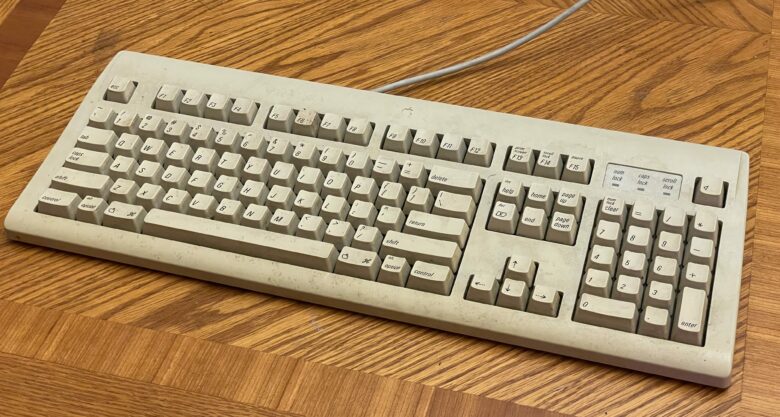
Photo: D. Griffin Jones/Cult of Mac
Apple was in trouble in the mid-nineties, and one of the (many) canaries in the coal mine was the AppleDesign Keyboard. Apple replaced the lauded Extended Keyboard II with a cheap membrane keyboard dressed up in a costume from Spirit Halloween.
It had the same mushy, disgusting keys that came bundled with the bargain bin Mac, shaped like the keyboard everyone loved. It’s like if I ground up McDonald’s burger meat and served it as meatloaf with powdered mashed potatoes at a five-star restaurant.
Cheap products have their place. I just bought the cheapest Retina display on the market, and I’m moderately happy with the value. But for cheap products to masquerade as top-of-the-line is tacky and soulless.
It doesn’t even have an embedded six-color Apple logo but a hollow shadow molded into the single body of plastic.
I got this keyboard for free and I paid too much for it. It sits in a box in my attic where it has never been plugged into any of my Macs — exactly what it deserves.
9. Apple Keyboard II
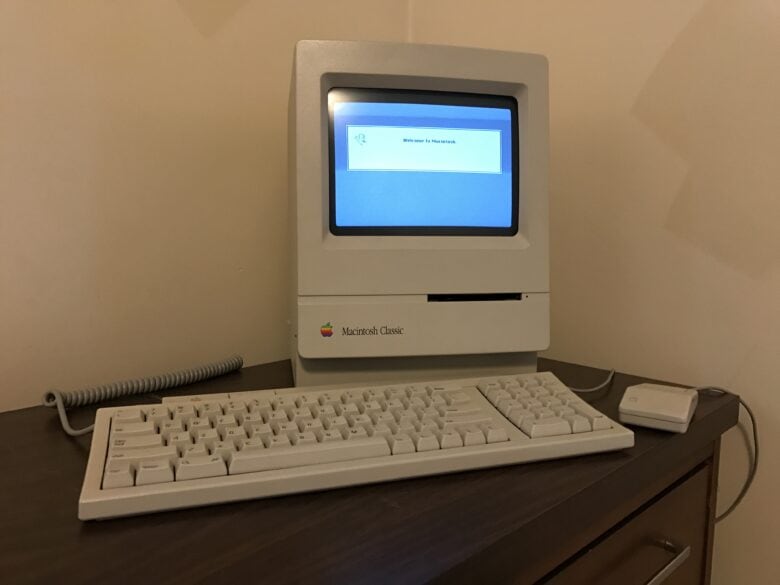
Photo: D. Griffin Jones/Cult of Mac
Released in 1990, the Macintosh Classic needed a slim, modern-looking keyboard to match its new design language called Espresso, which made use of organic, swooping curves.
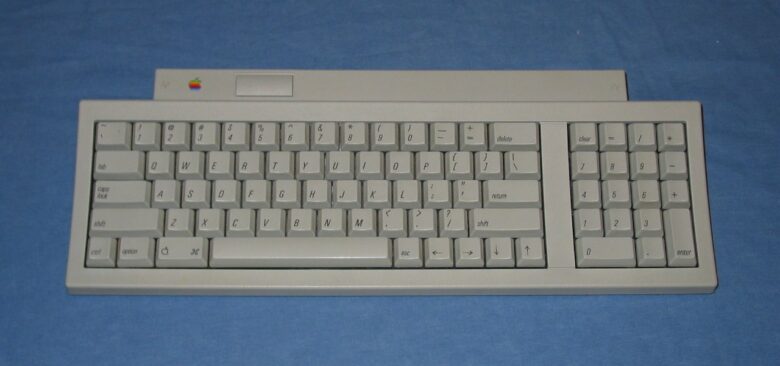
Photo: StephenEdmonds/Wikimedia Commons
It also needed to be cheap, and that it was. It eschews the mechanical switches for a cheap membrane board. It’s mushy and unpleasant. You will type slower on this keyboard.
This keyboard is late enough in the game that they really should have known better than to have all four arrow keys in a single row instead of, you know, in an arrow shape. The wild west of the 80s were over. It was the Mac and the PC. There’s no excuse.
8. Apple Standard Keyboard
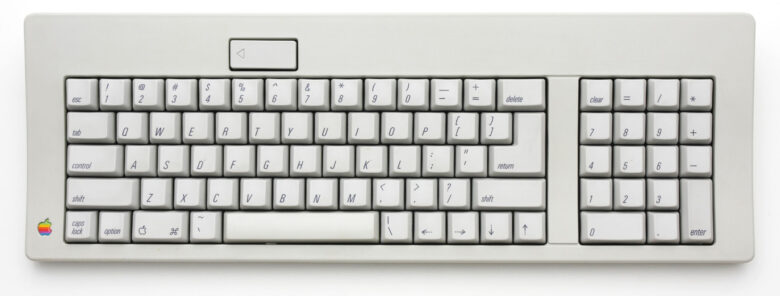
Photo: baku13/Wikimedia Commons
The Apple Standard Keyboard marked a return to normal-shaped keycaps and chunky bezels. It’s like the designers woke up one day and remembered they were living in the late 80s.
Both this model and the Apple Extended Keyboard were introduced simultaneously and were sold separately from the Mac. At the low end, the Macintosh Plus and its matching keyboard remained on the market. This is the mid-tier model that was intended to be paired with the Macintosh SE.
The construction is cheap, but the keys themselves are fine enough to type on. It’s been overshadowed in history by the Extended Keyboard — for good reason.
7. Apple Desktop Bus Keyboard
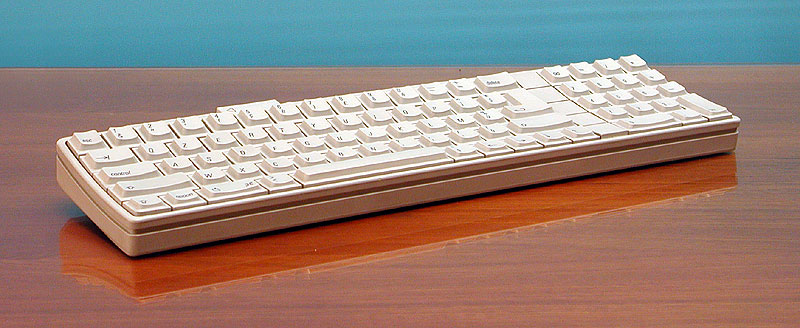
Photo: allaboutapple.com/Wikimedia Commons
As Apple’s design evolution changed, so too did its keyboards. Gone was the chunky and beige, in were the slim white lines, thanks to a partnership with Frog Design.
This was technically an Apple IIGS keyboard, but thanks to some clever innovations, Apple peripherals were now completely interoperable.
I am referring, of course, to the ADB (Apple Desktop Bus) port. The idea is that you plug in your keyboard to the back of your Mac, and you can plug your mouse into the side of your keyboard for convenience. The same port could connect a printer or network between other Macs.
Another great innovation that is sadly lost to time is the power button. You didn’t have to reach around your Mac to turn it on; you could hit the button right on the keyboard. And with how often Macs crashed back in the day (especially once they added multitasking to an operating system without protected memory) you’d push that button quite a few times in a workday.
The design is really striking. It looks shockingly modern — almost anachronistic for the mid-80s. This marks the switch from Helvetica to Univers Light Condensed Oblique, which would continue through the 2000s.
Unfortunately, it’s every bit as brittle as it looks. You rarely see these particular keyboards without a key or two missing.
One really stellar decision was to replace the weird arrow key layout on the Macintosh Plus keyboard with an even weirder one that makes even less sense. And while they were at it, they added the Control key, but put it where Caps Lock should be. Good job, guys.
6. G3 Notebook Keyboard
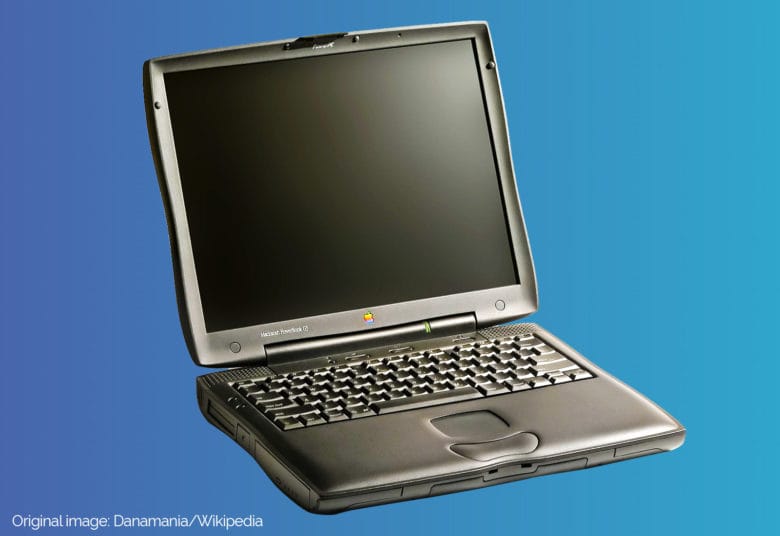
Image: Ste Smith/Cult of Mac
They don’t make laptop keyboards like this anymore. The keys are thick and sculpted with sharp edges along the ridges. It’s really easy to feel where your fingers land on the key. You don’t realize how important that is for touch typing until it’s gone. The keys also have a very nice texture.
This is, of course, from a time when upgrading your laptop after you bought it was extremely commonplace. More RAM, a faster hard drive and a snazzy new AirPort card.
All of this could be accessed underneath the keyboard. You flip down two little tabs between the function keys, and the whole keyboard flips out, revealing the laptop’s innards.
As nice as the keyboard is, the lack of structural support underneath means it’s really flimsy. You can feel the center keys wobble under your fingers if you type with even moderate force. A later version of this keyboard on the white polycarbonate iBook used a bad kind of glue that turns yellow and gets stinky over time.
5. Aluminum Keyboard
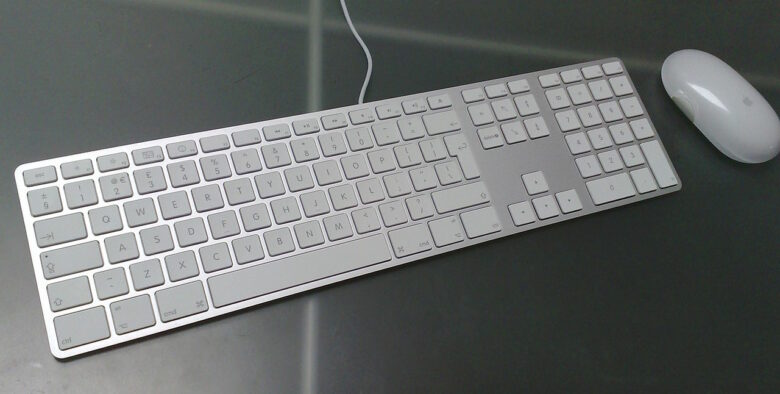
Photo: Tanais Fox/Wikimedia Commons
This is the keyboard that reigned supreme for many, many years during the Intel era. Desktop and laptop. On laptops, it had black keys that are higher contrast and easier to read. They all make a pleasant little muted pitter-patter sound as you type.

Photo: Cult of Mac
If you’re about my age, this is probably the first Apple keyboard you typed on, in one of its many forms.
The incredibly thin body of the keyboard, even on the desktop model, is very ergonomic. The wireless model perfectly matches the trackpad of the time.
It’s a perfectly fine, unremarkable keyboard. That means we’ve reached the middle of the review — let’s move on to the greats.
4. The Macintosh Keyboard
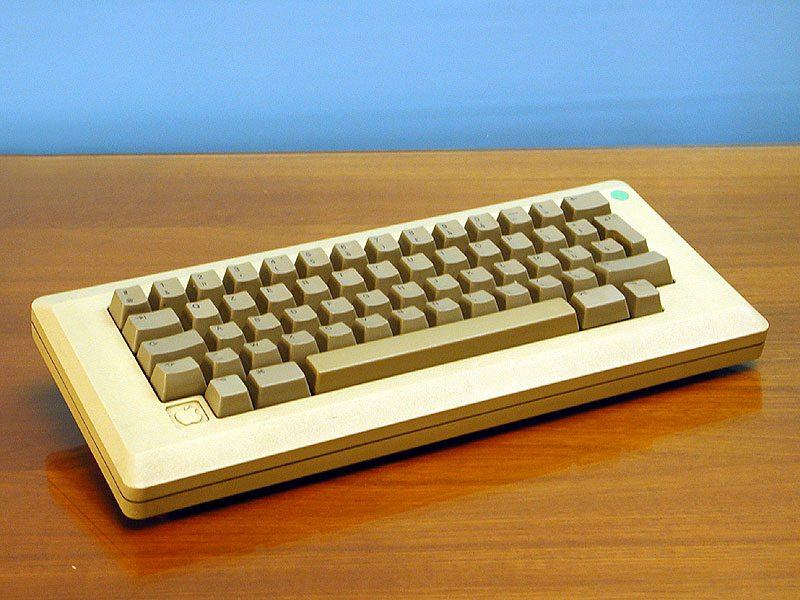
Photo: allaboutapple.com/Wikimedia Commons
The Macintosh keyboard is bizarre to the modern eye; it’s reflective of the early days of personal computers. Every computer manufacturer made machines that ran completely different operating systems with totally different software and user interfaces. No two computers were alike — and no two keyboard layouts were alike.
It wasn’t until the IBM PC steamrolled the rest of the computer industry through the late 80s that the keyboard layout we all know and love today became universal.
The Mac was no different. The original keyboard is missing a function row, it’s missing arrow keys, it’s missing the Control key. It made sense at the time — the Macintosh System software (not even named Mac OS yet) was remarkably limited compared to modern macOS. Computers were so limited in power and memory that the entire software and operating system stack had to fit in less space than the first tenth of the picture you just scrolled past. Simple software doesn’t need a complicated keyboard.
It’s a pleasant keyboard with a one-of-a-kind mechanism. Computer manufacturers hadn’t consolidated on membrane keyboards or even the Cherry-type switches that modern mechanical keyboards use. As you bash out words, it makes a loud thunking noise that reverberates and echoes. The keys are firm.
It’s comfortable to type on all day long, but what kind of madman would do that in this day and age?
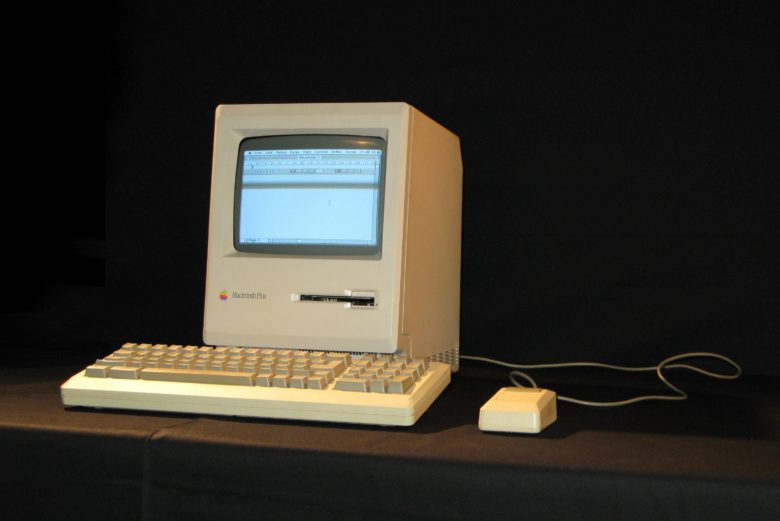
Photo: Rama/Wikipedia CC
The Macintosh Plus keyboard adds a conventional number pad, but not without a few more quirks. The Return key has grown in size to a gigantic L-shape, reminiscent of electric typewriters of the day. This pushes the \ key down the bottom row, next to the spacebar. It adds arrow keys, sure, but not in any logical orientation.
3. The Magic Keyboard
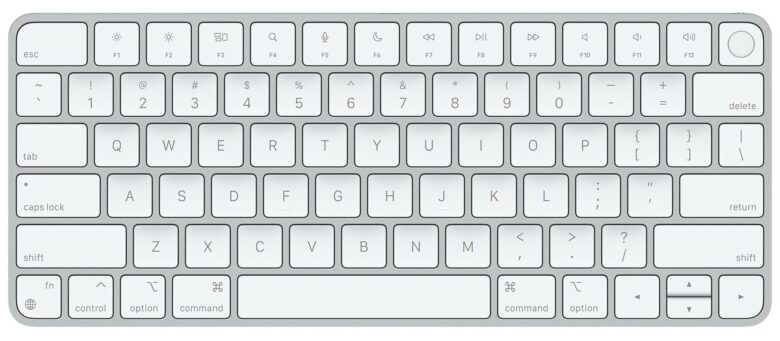
Photo: Apple
Apple used the marketing term “Magic Keyboard” earlier with the wireless version of their desktop keyboard. Apple redefined it in the wake of the butterfly keyboard fiasco as their latest breakthrough in keyboard-that-you-can-actually-type-on technology.
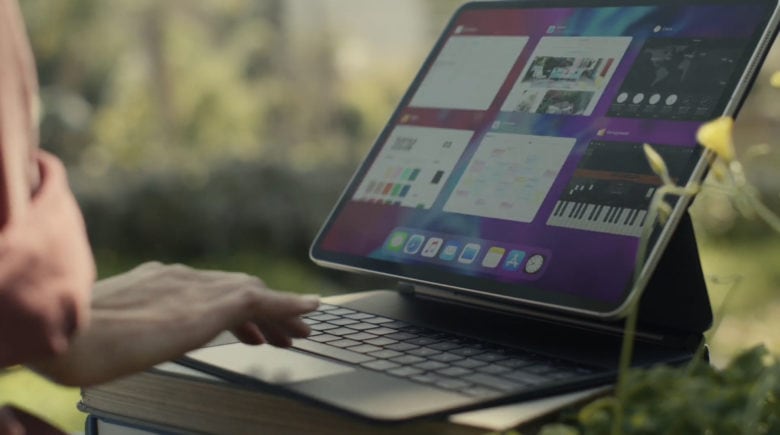
Photo: Apple
On the desktop, that means it’s the same keyboard you’ve always known and liked. On laptops, it’s a saving grace that you don’t have to worry or even think about the keyboard. On the iPad, that means you’ve spent over $300.
To this day, I still get people asking me over Twitter and email with the same message: “I’m thinking about the 14-inch MacBook Pro, but is the keyboard OK?”
The answer is “yes.”
Apple has yielded on the butterfly mechanism that was the source of its reliability problems. They’ve increased the key travel, increased the key spacing and returned to normal arrow keys (on the laptops, at least). In other words, it’s what people expect out of a keyboard.
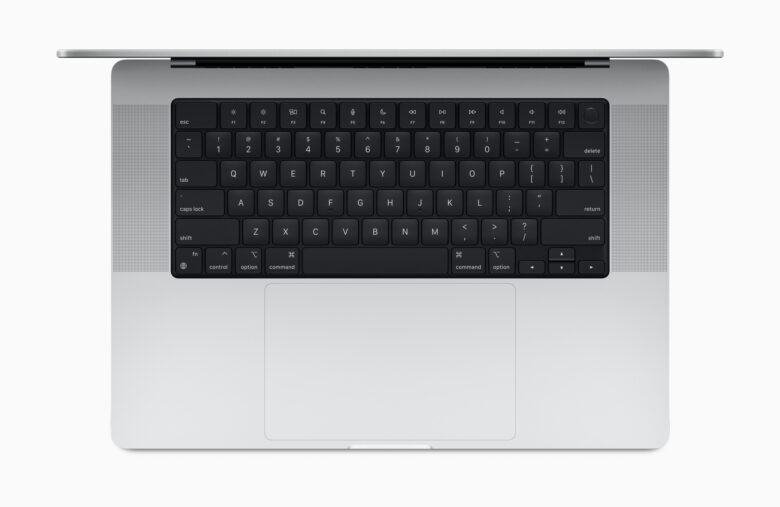
Photo: Apple
It’ll take Apple a while to rebuild the bridges it burned with the butterfly keyboard. Just like people still cite the iPhone 6 battery fiasco as evidence that Apple is maliciously slowing down phones to get you to buy a new one and how that famous teardown of counterfeit Beats headphones soiled the Beats reputation.
The Magic Keyboard can only be best described in contrast to what came before it because it’s so unremarkable. And we wouldn’t have it any other way.
2. G4 Notebook Keyboard
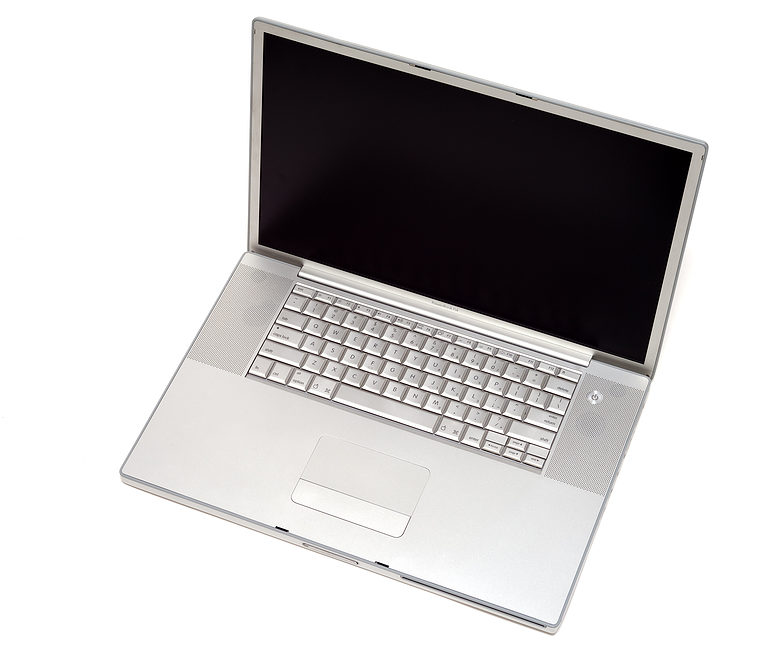
Photo: Ashley Pomeroy/Wikimedia Commons
This is the Apple Extended Keyboard II of laptop keyboards. The gold standard.
The highly sculpted keycaps of the G3-era laptops have been toned down, but they’re still there. In a great piece of attention to detail, the supplementary keys — shift, caps lock, enter, the function row, the bottom row of modifier keys — are flatter and rounded. It orients your hands subconsciously. I haven’t used this keyboard regularly since 2015 and I can still tell you exactly which keys are shaped like which without looking it up because the muscle memory is so strong.
I have no idea what kind of plastic they used for these keycaps, but they feel incredible. They’re so soft. It’s like typing on fine silk. It’s like putting your feet in a pair of fresh socks. It’s like wearing one of those super-expensive winter coats that looks impossibly thin yet keeps you so warm.
Apple introduced the backlit keyboard with this design. Because the edges of the keys are angular and sculpted, it has this beautiful effect where you press a key and it looks like it’s dipping into a pool of white light.
This design held out through the early 2008 MacBook Pro, before the modern unibody design, which is where I grew to love it.
The key travel is just perfect for a laptop. This is a laptop keyboard that doesn’t feel like a compromise.
1. Apple Extended Keyboard
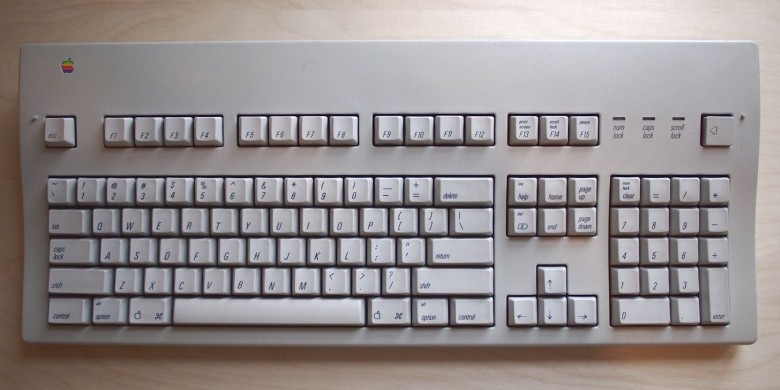
Photo: University of Chicago
When Apple was designing the radical new Macintosh II, they couldn’t just give it a pedestrian keyboard. This behemoth sitting next to the Macintosh SE was like an aircraft carrier parked next to a Honda Insight. Even by modern standards, this is a gigantic computer.
It needed a suitably massive keyboard and the Extended Keyboard delivered on that promise. It brought, for the first time, a full set of arrow keys in their normal arrangement (imagine that!), Page Up/Down Home/End keys, 15 function keys and acres of breathing room between them.
There’s no reason for all this plastic. Apple proved how small a keyboard can be. But that’s not how human brains work. This one must be the best one, look how big it is!
You don’t spend $13,000 on a top-of-the-line Macintosh to give to an intern in a cubicle. This computer is getting its own office — with a door and a view out the window. Desk space be damned.
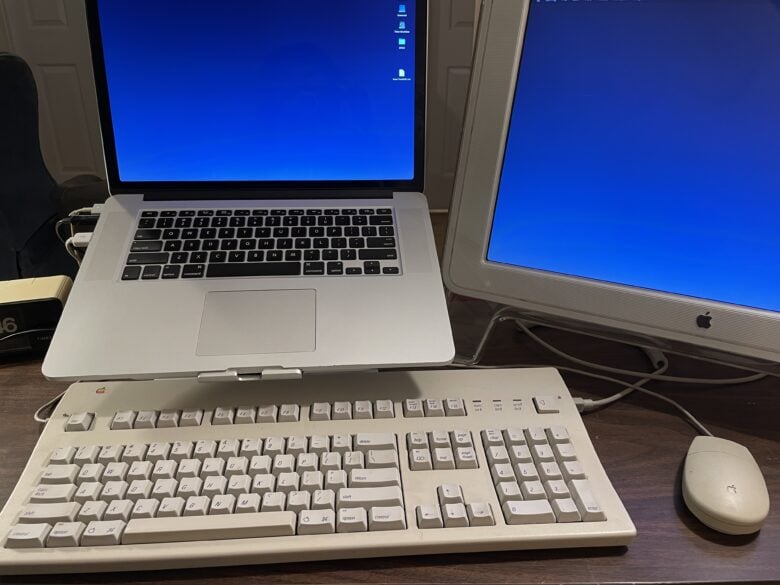
Photo: D. Griffin Jones/Cult of Mac
And everyone who madly raves about this keyboard is right. It’s the best keyboard. It doesn’t get in your face about feeling mechanical with a harsh click and a loud noise. Apple has never, and likely will never, made a keyboard as comfortable as this one.
The Extended Keyboard II switches out the flipping feet for an adjustable slider that you can set to any angle you want. This is the last mechanical keyboard Apple would manufacture.
What have we learned?
Understanding the past is the clearest way to make sense of the present. What lessons can we take from the keyboards of yore?
- People like keyboards that work when you type on them (ahem). This is a lesson Apple has learned the very hard way — hopefully, it’s a mistake that only needs learning once.
- The integrated power button was great, but unfortunately I don’t see it coming back any time soon. Apple of today expects you to leave your computer in sleep mode when you’re away, and unlock it using the Touch ID button. It’s a rarer occurrence, but when people mount their Mac under their desk, or dock their MacBook with the lid closed, reaching for the power button is an inconvenience.
- Apple’s mechanical keyboards were more pleasant to use and the sculpted keycaps were easier for touch typing. Apple seems content leaving this to third parties to fulfill. It’s a shame for people with laptops because you can’t replace the built-in keyboard of your MacBook Pro. It’s a shame for people with desktops because you can only use Touch ID with Apple’s Magic Keyboard.
- Never, ever mess with the arrow keys.
Keyboards Absent
The keyboards made by NeXT aren’t technically Mac keyboards, but I could entertain the argument since one such model used ADB. I would happily bend my better judgment and review it here if a NeXTstation Turbo Color with its matching keyboard were mailed to my house.
The oldest PowerBook in my collection is from around 1998. I have no reference for the early 100-series models, but I might be getting one soon.
I don’t have the first USB keyboard that shipped with the original iMac. This keyboard has a very interesting foot mechanism I would love to try out.
The Apple Adjustable Keyboard, an ergonomic split keyboard from the early 90s, looks like a clunky, brittle mess. They’re very expensive second-hand.
Finally, there is the combination keyboard/trackpad that came with the Twentieth Anniversary Macintosh. I had the chance to briefly touch one at this year’s Worldwide Developers Conference, but not enough to accurately rate it.
If you or anyone you know is willing to part with a missing keyboard here, get in touch.
